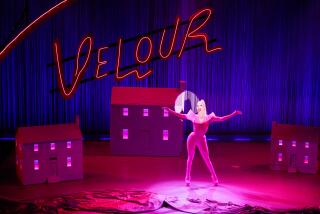A Second Look: Sacha Guitry in the 1930s
Most filmmakers who had a hand in shaping the language of the art form approached cinema with the mind-set of pioneers, eager to test and prove the medium’s expressive potential. Not so Sacha Guitry. The French actor, writer and director who secured his place in the cinematic pantheon with a series of dazzling comedies made in the 1930s turned to film begrudgingly, spoke of it with condescension and maintained a lifelong allegiance to his first and true love, the theater.
Guitry was born and raised in Russia, the son of a stage star who was for a time under contract with a French theater company in St. Petersburg. A prolific playwright from his teens, Guitry became a darling of the Paris theater in the 1920s. He gravitated to film in the 1930s, lured by the rise of screen talkies and the promise of a bigger audience.
An iconic figure in France, known for his acerbic bons mots and championed by the critic-turned-filmmakers of Cahiers du cinéma (especially Francois Truffaut), Guitry has remained largely unknown in the United States. His screen and stage career continued into the 1950s (he died, aged 72, in 1957), but the four-disc “Presenting Sacha Guitry” ($59.95) — a new boxed set from Eclipse, Criterion’s mid-price line devoted to underappreciated auteurs — focuses on a breathless period in the late 1930s, during which he made nine films in the span of three years. All four in this set feature his wife at the time, the actress Jacqueline Delubac.
The picture of dandyish sophistication, Guitry is often described as a French Noel Coward, though he can also be seen as a counterpart to Orson Welles or Laurence Olivier, those larger-than-life hams who in moving from stage to screen took full control both in front of and behind the camera. Another contemporary who comes to mind, given the dexterity and layered precision of his wordplay, is Preston Sturges.
The earliest film in the set, “The Story of a Cheat” (1936), is widely considered Guitry’s cinematic breakthrough and best film. Artfully framed as the reminiscences of a middle-aged memoirist, the movie installs Guitry as hero, raconteur and puppeteer — the flashback scenes that make up the bulk of the movie are devoid of dialogue, accompanied instead by Guitry’s wry, propulsive voiceover.
Beginning with a childhood act of petty thievery that got him sent to bed without supper — thus avoiding the poisonous mushrooms that wipe out his entire family — the unnamed hero looks back on how he came to understand that dishonesty has its benefits. Graduating from bellhop to croupier and eventually card sharp, he leads a life full of romantic and comic intrigue that Guitry the filmmaker presents with a sense of visual mischief that matches Guitry the narrator’s verbal wit.
“The Pearls of the Crown” (1937) stands as Guitry’s most cinematic achievement, a trilingual spectacle (in French, Italian and English) that far outstrips the scope of “The Story of a Cheat” — or of most historical epics, for that matter. At once impish and grandiose, this century-spanning saga deploys a cast of world-history all-stars (including Catherine de Medici, Mary Stuart and Napoleon) to recount the passage of seven pearls through the mists of time. An attention hog even in a cast of hundreds, Guitry assigns himself four roles.
The other two works in the set are more modest and conventional: elegantly constructed romantic farces with a mere handful of characters and locations, and as such better approximations of Guitry’s stage work. But these movies are hardly static or inert in the manner of filmed theater, and they have a subversive edge and emotional weight that set them apart from the frivolous soufflés associated with the genre.
In “Désiré” (1937), a satirical look at love — or rather, lust — across the classes, Guitry plays the newly hired butler to Delubac’s mistress, both carrying out a semi-conscious flirtation via mutual erotic dreams.
“Quadrille” (1938) expands the entanglements to encompass a foursome: a newspaper editor (Guitry), his mistress, his star reporter and a Hollywood hunk whom the editor’s mistress promptly falls for. The geometry of the plot — two overlapping love triangles — is the familiar stuff of bedroom farce. But amid the humorous changes of heart, there are surprising reserves of emotional candor.
Guitry might have been a master of quick-fire banter, but in his most potent films, he understood the importance of allowing the words and actions of his characters to sink in and to sting.
More to Read
Only good movies
Get the Indie Focus newsletter, Mark Olsen's weekly guide to the world of cinema.
You may occasionally receive promotional content from the Los Angeles Times.









